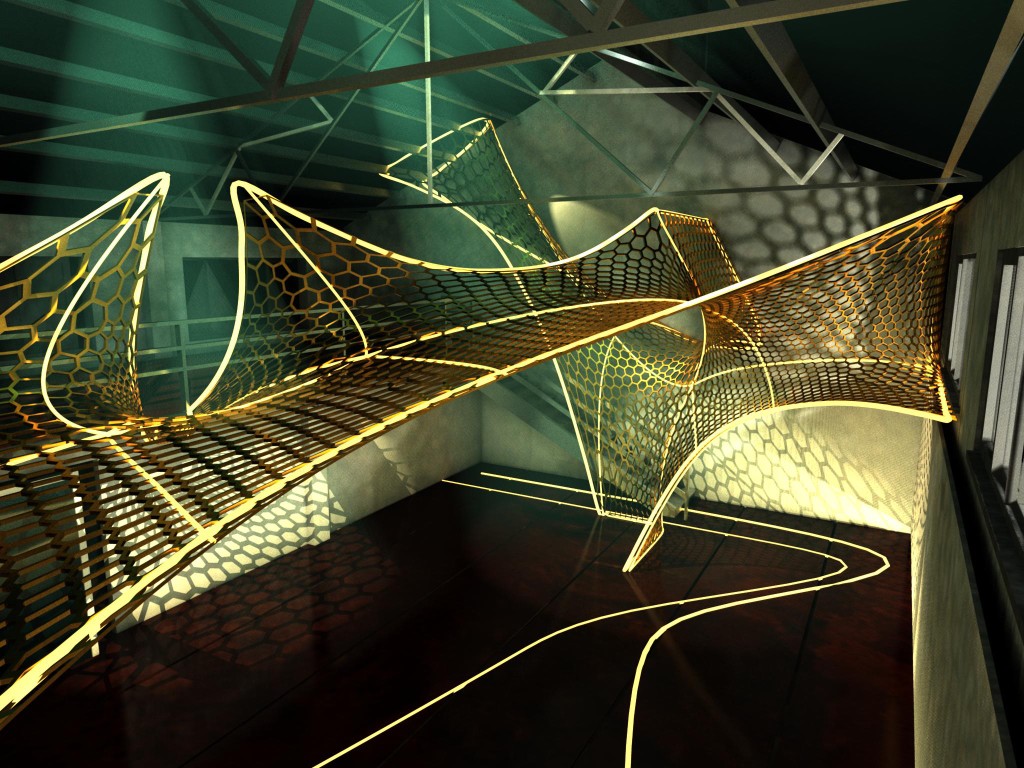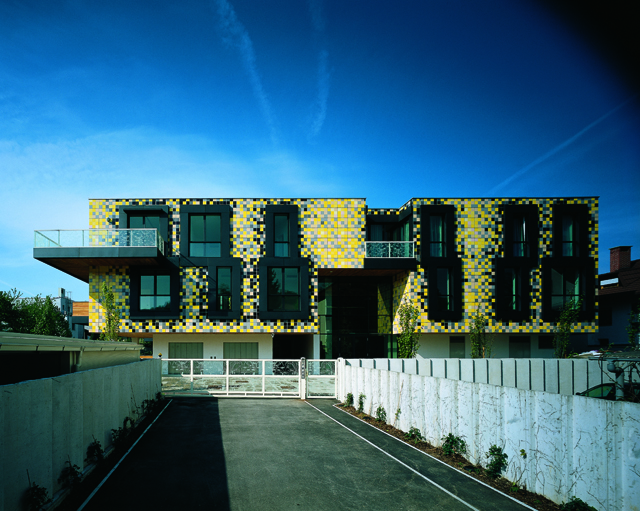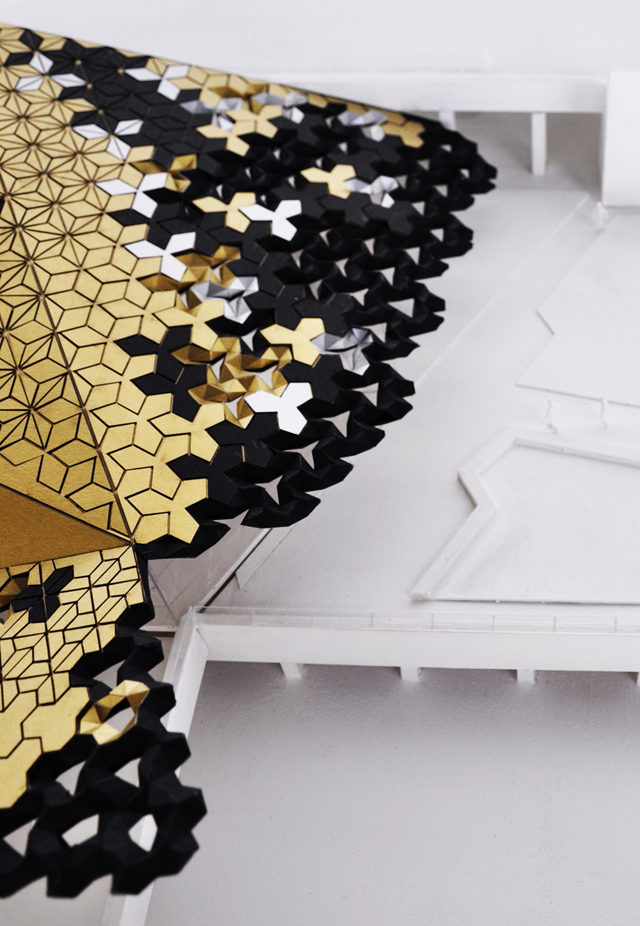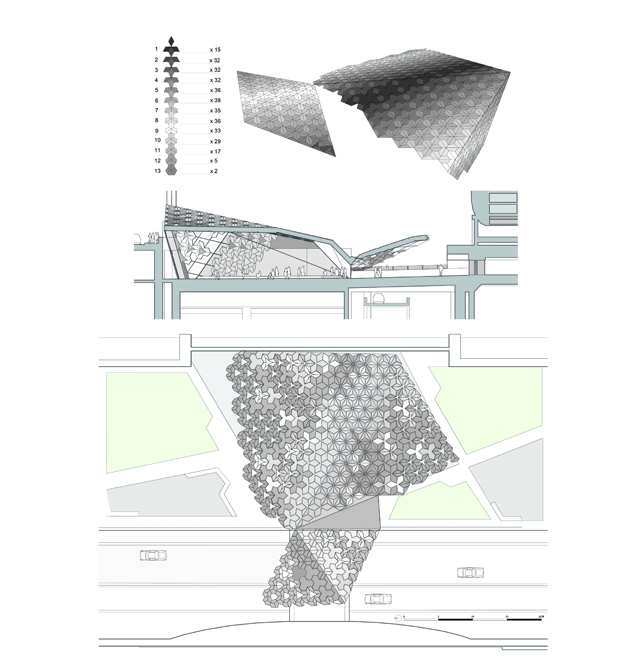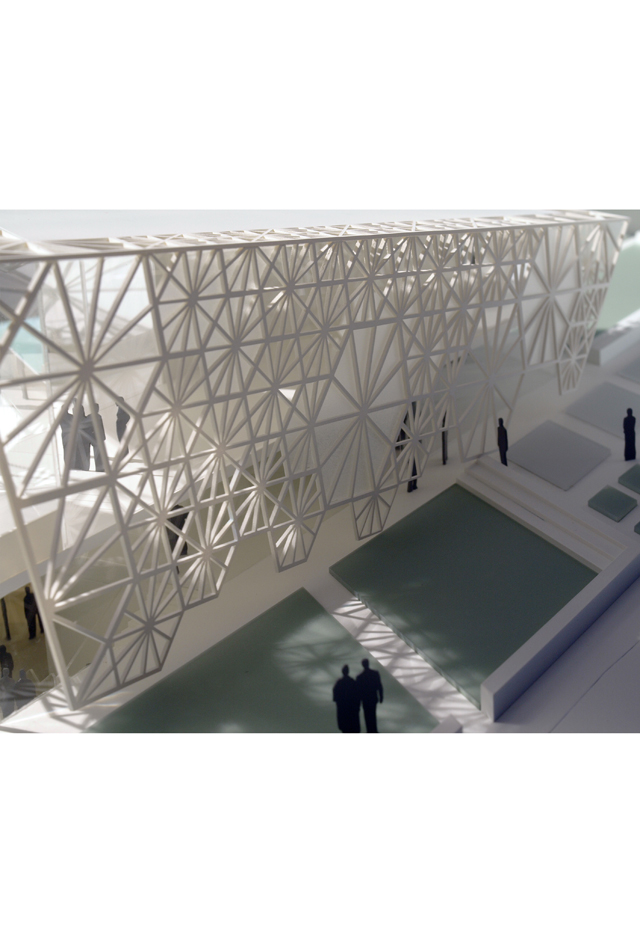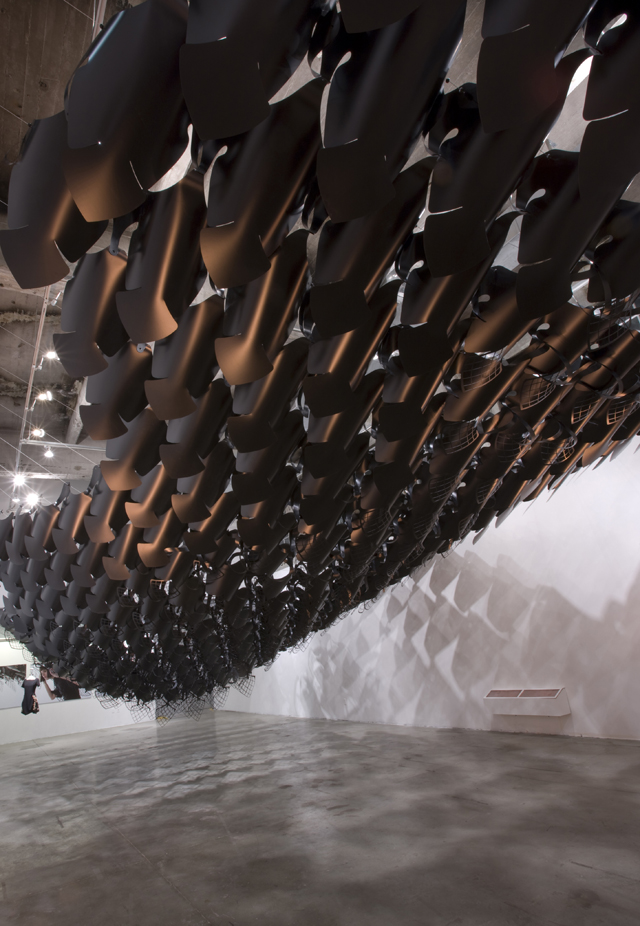ATELIER MANFERDINI
“Once again architects, painters and sculptors must learn to know and understand the complex form of architecture in its totality and in its parts … We commit together our will, our inventive- ness, our creativity in the new building of the future, which will be all in one form: architecture, sculpture and painting, and by millions of hands of artisans, will rise into the sky as a symbol of the new faith that is rising!”
This was what was written on the flyer distribu- ted in Weimar in April 1919, which contained the manifesto-program of the Bauhaus, the school founded by Walter Gropius in the German town whose most famous quote is “from spoon to city”, thus defining the field ‘s application of the architect’s work. For Gropius it was important to design at all scales, because only by doing so you would have awareness of your own creations. Elena Manferdini, has definitely succeeded in doing this! Architect, engineer, fashion designer, she gradua- ted from the University of Civil Engineering in Bologna, then at the University of California Los Angeles (Master of Architecture and Urban Plan- ning). In 2004 she founded the Atelier Manferdini based in Los Angeles. Her works have toured the world from fashion to industrial design, through engineering and architecture. Her beautiful laser- cut creations have been chosen by customers such as Fiat, MTV, Nike, Guzzini , Ottaviani ,Valentino. Her works have been exhibited in art museums and architecture classes at an international level: her work was exhibit in “Skin and Bones”, in Tokyo. In 2010 she was invited to organize the West Coast USA session of the exhibition of the Biennale of Beijing and she designed the pavilion of the West Coast for the Chinese Millennium Museum.
VT: In the Merletti installation, you interpret the traditional Italian lace making techniques in a dra- matic canopy suspended across the SCI-Arc Gallery in Los Angeles, while in the China Fabric Tower you reinterpret the watermark of the traditional headgear of women of Guiyang. Where does your interest in the history of lace and its role in the ornamentation in architecture come from? How do you develop the approach between ornament, contemporary architecture and art installations in your projects?
Elena Manferdini: The interest in lace was born from the structureof lace itself, which combines a repetitive figure that is the ornament in general, which can be of diffe- rent kinds, and connects them with a functional, structure creating a surface, it is interesting to see the duality between the ‘abstraction of the structure and the figurative part of the ornament. In decoration lace has passed from a minute scale to the scale of a whole façade and the fact that it was used in an installation meant for me to find an intermediate scale between the opening of the facade and the lace itself. In Venice there are many examples of facades that show this concept, also Venetian lace brings back to the geography of the islands of Venice, as these are connected by bridges and in Venetian lace, the joining point is actually called Venetian bridge. I was interested in this connection of islands made by bridges as well as the connection of the lace where the decoration is created by these bars that make up the structure.
VT: West Coast pavilion from a dress (the Cherry line ) to a building. The building technique of these sandwich laser-cut plastic panels, is the same used for laser cutting in clothing. Is the switch from fashion to architecture just a change of scale in the design process?
Elena Manferdini: West Coast Pavilion is a 2006 project and was based on the study of a two-dimensional drawing pattern that could lead to different architectural solutions on different project sca- les with different materials, so the same pattern was chosen for the construction of a line of clothing , for some design items designed for Alessi and for the pavilion design. It is a research on the flexibility of the two-dimensional design and its ability to adapt itself to different project scales. My interest for fashion stems from the chance to work with a flat surface, the fabric, and being able to transform it, depending on the cut and the profile of the pattern in a three-dimensional object. The passage fashion-architecture is not just a matter of scale but of the intelligence of design that can go from a plan to three dimensions.
VT: “We must open our minds to the possibilities” (as you said) in what way?
Elena Manferdini: Architectonic multidisciplinary is mainly a European approach while in America there is more segmentation in the various working steps that can be residential, commercial, etc., etc., working at different scales is a concept that was developed by the Bauhaus, but I think that in this historical moment we may extend this also to other states mainly thanks to digital technology because the communication and exchange among various disciplines becomes easier and then it becomes easier for architects open their minds to new collaborations and projects and then to the various possibilities in general.
VT: Contemporary digital design is the subject of numerous experiments, your study is defined at the forefront in the field of research and computer-aided design. What is the purpose of your research? Where would you like to arrive?
Elena Manferdini: I’m carrying out several studies, some at a professional level, others at academic level, which are different but sometimes coincide. My researches in the faculty are related to painting, sculpture and the relationship with architecture. It is a ‘research on methods of rendering and it is possible to notice the similarity of the two fields and the influence they have on each other, rendering and painting. Much of the pragmatic exploitation is made on synthetic materials that reproduce some painterly effects. At a study level most of the research originates from the relationship with the customer and the strong link between two-dimensional drawing and three- dimensional realization. All the work is based on the flat surface, the fabric and on the assembly of three- dimensional sheets.
VT: You say that your versatility derives from your Euro- pean training and in particular thanks to the use of digital tools. How important are these instruments today and what is their influence on your work? What kind of software do you use in your studio?
Elena Manferdini: They are essential. My training is based on the use of software I could not do without. They allow a different design stage, ideas do not change, but the sensitivity of the design and of the production changes. Digital has become the reality of the design at any scale, whether you like it or not.
VT: “Design as a multidisciplinary range of developments that define our culture”. You apply aeronautics and automotive building and production technologies to the fashion industry. How do you do that?
Elena Manferdini: The entire fashion collection in 2005 was based on laser cutting that in those days was not widely used in fashion but much in other fields of production and manufacturing. The brilliant Software that we use, like Maya or Catia, are software created for other sectors, such as cinema or aerospace industry, but they made their entry in architecture.
VT: Architect, fashion designer, engineer. What is the qualification that better describes your activity?
Elena Manferdini: Architect of course! It is a multifaceted profession that better describes my work.
Related Posts :
Category: Article
Views: 8089 Likes: 1
Tags: Bauhaus , elena manferdini , Lace , Los Angeles , Pavilion , Southern California Institute of Architecture , Walter Gropius
Comments:
Info:
Info:
Title: ATELIER MANFERDINI
Time: 28 ottobre 2011
Category: Article
Views: 8089 Likes: 1
Tags: Bauhaus , elena manferdini , Lace , Los Angeles , Pavilion , Southern California Institute of Architecture , Walter Gropius

